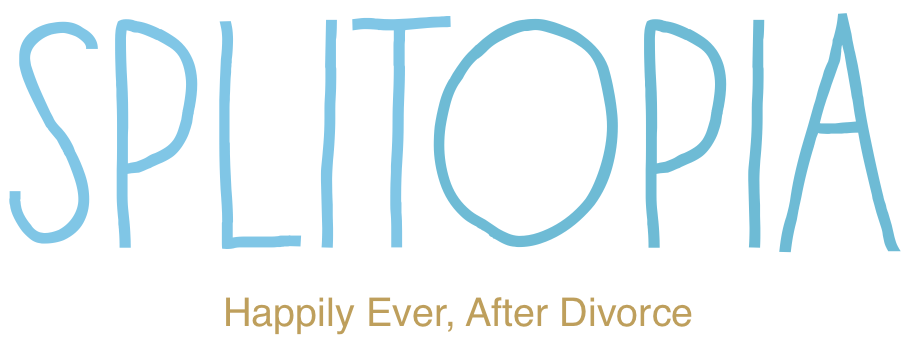I Was a Typical Divorce Lawyer, Until I Got Divorced
/I went to law school because I was interested in justice. On maybe day three of orientation week, I realized that law school was less about justice and more about business. I didn’t have a Plan B, so I stuck it out.
Family bonds are strongly ingrained in my family, so family law seemed a natural fit. I went in that direction. In my early years, I worked in a boutique Manhattan family law firm that divided its practice between matrimonial law and child welfare litigation. That meant I was in court a lot, sometimes for my divorce cases, sometimes for incredibly heart-wrenching cases involving kids whose lives had derailed. I saw how the law impacts families in many ways, and it usually wasn’t pretty. Family court in New York is where juvenile criminal cases are heard. (It also happens to be where Judge Judy sat on the bench when she was actually a judge before her super stardom.)
One day, early in my career, I was sitting in the back of the courtroom waiting for my case to be called, watching the proceeding ahead of mine. A 13-year-old boy, on trial for a mugging that had injured a grandmother, was on the stand weeping. He was begging the judge to let him go home. As I sat there and watched, I was overcome with relief that I wasn’t the judge; I wasn’t the person charged with having to decide what to do in this tragic, no-win situation.
Compared to that type of case, handling divorces should have been easy. But somehow, it wasn’t. I was a young lawyer and enthusiastic about my work. I was writing strong papers, arguing vociferously for my clients. I was filled with righteousness—a righteousness that somehow didn’t fit the actual circumstances of my work.
In one cross-examination, I had my client’s husband on the stand. We were fighting over custody, and my goal was to prove that he was too irresponsible to be regularly involved in the life of their young daughter. At one point, I caught him in a lie over the use of a car seat. I’d wrenched proof of his wrong-doing as a parent; he’d forgotten to use the car seat and lied about it court. Surely, he would lose custody of his toddler! I finished my cross-examination and turned, victorious, to stride back to my seat.
Then I saw my own client—she was weeping. She was devastated by what I had done, supposedly on her behalf. I’d shamed her husband in court, probably destroyed her daughter’s chance of having an ongoing relationship with her father, and damaged the parents’ ability to trust each other and make their own decisions together in the future.
All this over something as trivial, in the grand scheme of things, as the use of a car seat on one day of their child’s hopefully very long life.
He wasn’t a compulsive liar, but it wasn’t surprising that I’d caught him in a lie. He knew if he’d admitted the truth in the court setting, it could have been used against him. I knew then what I'd already begun to suspect:
Something was deeply wrong with how the legal system handles divorce. It simply wasn’t good for families.
***
I come from a family in which there had never been a divorce. My grandmother took me aside in the weeks leading up to my first marriage to say, “You know, Katherine, you can never get divorced.” Since I was already a divorce lawyer at the time, this surprised me. I said, “What do you mean? If I am unhappy, I’m going to get divorced.” She replied, “No, Katherine, whatever happens, family comes first.” For her, “family comes first” meant staying married no matter what it takes—even if one’s spouse starts having affairs and drinking to excess, as my own first husband began to do.
As my job as a divorce lawyer began to wear on me, my grandmother’s words kept running through my head: “Family comes first.” As I had seen, sometimes a family is made of two parents who are un-marrying. Was there a way to not destroy a family in the process of divorce?
I took a mediation training, on a quest to find a better way to help people untangle their marriages gone awry. I started trying to integrate the techniques I learned into divorce case negotiations. But I ran into one problem in every case: the other lawyer.
It wasn’t that other lawyers didn’t want to settle, but rather that we couldn’t talk about the details that actually mattered to the couple. Instead we would find ourselves arguing over legal points that were confusing to the couple, threatening, and totally removed from the actual facts of their lives. We couldn’t calmly get to things like what days the mom could leave work early to get the kids, or who cared most about which holiday. We were posturing, fighting to win, and basically creating a lose-lose for everyone.
It’s important to understand that almost all divorces settle—the parties come to agreement—before trial. Everyone in the court system knows this, but negotiations in standard adversarial law don’t reflect this reality. They don’t work toward creating good settlements. Instead, divorce cases are strategies to win at a trial that will likely never come.
As lawyers, we focus on what points we can best argue and win. What is truly important for the husbands and wives and their children is lost on the battlefield. I could prove that the father had forgotten to use the car seat, so that’s the tack I took. But that “win” didn’t mean I’d helped the couple create a good parenting plan. Instead, I’d contributed to the loss of their ability to work together.
Tragically the relationships and the people are often irreparably damaged in the adversarial legal system.
I can’t state this strongly enough: the adversarial, traditional legal process can destroy families, and lives.
Read more about how to use mediation for your divorce, rather than the adversarial legal process.
Eight years later, my own marriage was ending. I had two young children, and I knew intimately the risk of divorce court to them and to myself. I was determined that my marriage would come apart civilly, and that no judge would make a single decision for my ex-husband and myself.
It was still a scary experience. The high level of conflict between us meant we were unable to mediate. We each hired our own lawyer, but we did stay out of court. We structured our negotiations to protect our children. We got through it, and we did manage to create a good un-marrying without ever asking a judge to make decisions for us, but it wasn’t because we were able to have constructive conversations easily.
When my divorce was over, I’d had it with family law. I quit my job. There was no way I was going back into a courtroom, having sat in the client’s chair and known the fear of that place.
As I cast about for something to do with the rest of my life, I signed up for another mediation training. I arrived for this second training on a beautiful June afternoon in Westchester County, New York. I took my seat with 23 others that day, and was introduced to a way of working with people in conflict that would totally change my life.
What I learned that week was something called the “understanding-based model of conflict resolution.”
The understanding-based approach to conflict resolution is the opposite of standard litigation. It is premised on a simple idea: the people in the best position to determine the wisest solution to a dispute are those who created it, and are living it. In other words, divorcing parents know best how to work through their problems and come up with solutions.
They need proper support, certainly, but with help, they can find a productive and constructive way to work together, to understand their conflict more clearly, explore possibilities for resolving it, and reach a resolution.
This idea completely changed my view of how to be a good lawyer, and my concept of what it means to support my clients. I fully embraced the simple but powerful idea that people can be supported to resolve their own disputes. People can be helped through the process of gaining a better understanding of themselves, each other, and the reality they face.
Instead of telling people what to do and arguing for what I think is the most defensible solution, I now work with people to identify what is most important to them. We then work toward synergistic resolution, with the best interests of the whole family in mind. My clients are much happier and my grandmother would be proud.
A client’s wife once told me, "I thought that my husband and I would be known for how we were married. But it turns out that we will be known for how we are divorced. Our daughter will know that we cared enough about her to put her needs first and find a way to negotiate with a shared commitment to her wellbeing."
***
Katherine Eisold Miller is a collaborative lawyer and mediator in Westchester County and New York City. She is immediate past president of the New York Association of Collaborative Professionals, a director of the Center for Understanding in Conflict, and a frequent lecturer about mediation and collaborative practice. She is the co-author of A Cup of Coffee with 10 of the Top Divorce Attorneys in the United States and author of The New Yorker’s Guide to Collaborative Divorce. She is also the host of the radio show Dialogue on Divorce.























